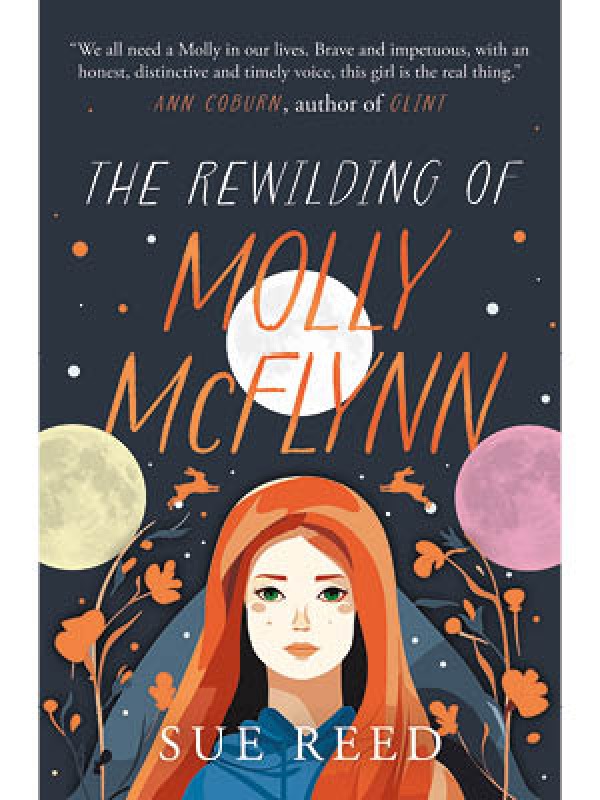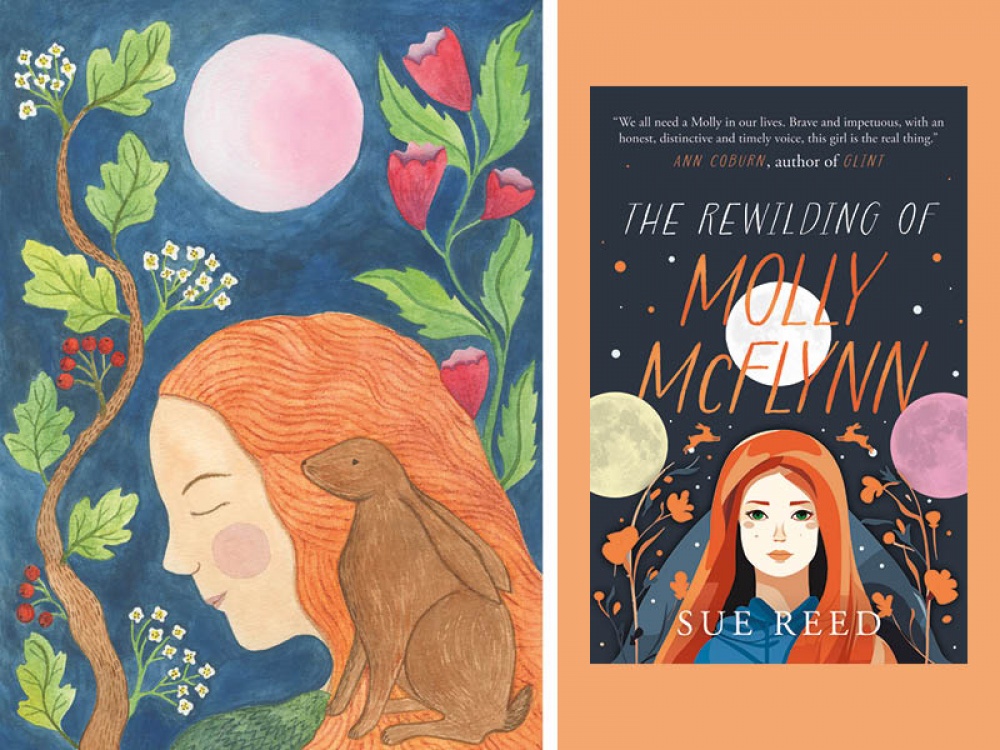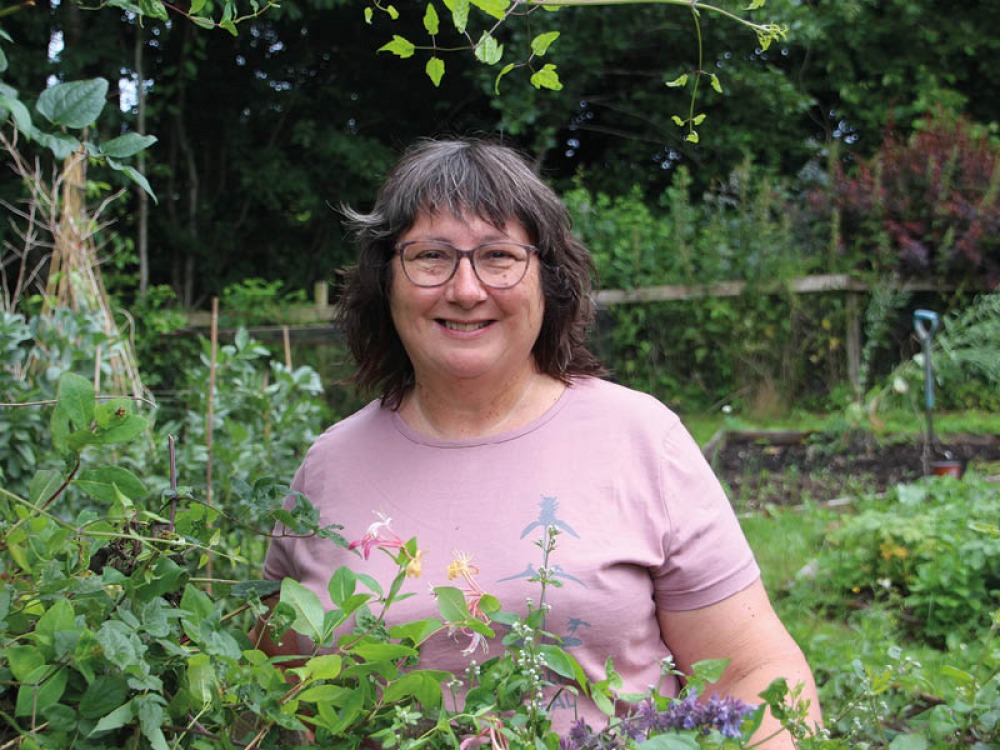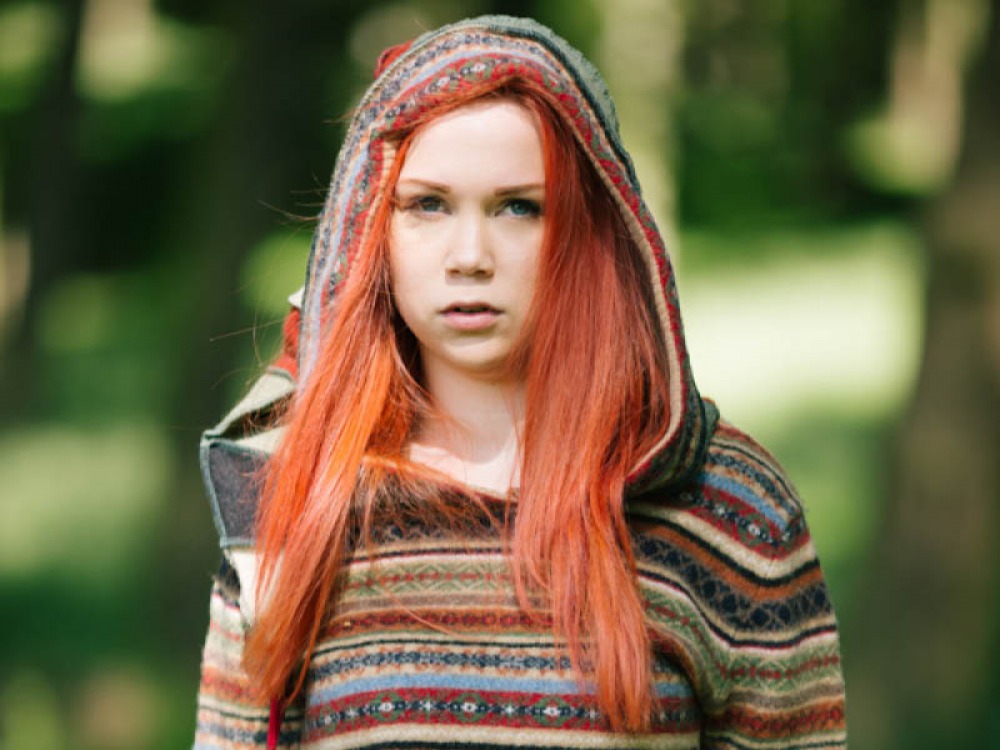
Meet The Northumberland Author of The Rewilding of Molly McFlynn

Formerly a teacher and previously known as The Woolly Pedlar, Northumberland-based author Sue Reed has worn many hats
Sue trained in special needs teaching. She met her husband whilst in London and moved north, gradually migrating further north to Northumberland. She had been writing curricula and sensory dramas for children with severe learning difficulties and was working at Hexham Priory School until 2011 but sadly had to leave her job, which she loved, due to health issues. ‘At home, not knowing what I was going to do or where I was going to go with my life, I started writing – just to keep sane I think’. That’s when Sue started her blog The Bridge Cottage Way, writing about gentle living, and her passions for ‘seasonal eating, growing veg, recycling and reducing the drain on our planet’s precious resources’.
With a focus on sustainable living, Sue began focusing on crafting, mending and making do, and when someone asked if she could make some arm warmers she bought an overlocker sewing machine and The Woolly Pedlar was born. Sue created a successful business up-cycling knitwear into everything from arm warmers to soft furnishings. ‘It started off as I would scour Hexham’s charity shops for old jumpers then I was at Living North’s fairs and sold out,’ she says. ‘It was absolutely phenomenal.’ Sue was sourcing the materials, designing, making, marketing and selling – but when the time came and she needed to slow down, it was her passion for writing that showed no signs of stopping.

‘My therapist suggested (because I was still writing and blogging) “why don’t you do an MA in Creative Writing?” It’s something I’ve always wanted to do,’ Sue explains. ‘When I was a child I would sew bits of paper together to make books and I’ve got shelves of journals going back to my teens. I’ve always blogged – I even blogged about The Woolly Pedlar – and found out you can get a student loan up to the age of 60. I was 58 at the time, so I applied to Newcastle University and got in! It was absolutely brilliant, but lockdown happened a term and a half in and I’d loved all that “student life”, but sadly we were back on our laptops.
‘In the first term we’d had [a course on] writing for children and young adults with Ann Coburn. She was our lecturer, and after I finished uni I employed her as a writing mentor to help me finish my book.’
Set in spring 2020, 15-year-old Molly McFlynn is uprooted from town life to live with her bohemian grandparents in rural Northumberland. Then she meets a girl in the woods who appears to be on the run. Martha is from the 17th century, fleeing from the witch finder and the men who put her mother, Ann Watson, into the dungeons in Newcastle. As Molly’s friendship with Martha grows, she finds and celebrates her true self and develops a love of nature – but they’re not far away from danger.
Read More: How a New Book is Celebrating Newcastle United Heroes
Sue asked local artist Louise Hick, whose work is inspired by plants and animals, to paint a picture reflecting Molly, the themes in the book and the story’s three acts: Hare Moon, Pink Moon and Flower Moon. Louise’s finished piece was sent to The Book Guild team to help create the book’s cover and Louise’s original artwork was made available to buy as a limited edition giclée print.
The inspiration for the story all started with a hare. ‘On the course, Ann had us thinking about things in our day-to-day lives, and things we had come across that might be starting points,’ Sue says. ‘Where we live is very remote in the wilds of Northumberland. It’s absolutely beautiful and I’ve always been very inspired by nature. Around us we have beautiful brown hares and one spring morning I’d gone out into the garden to pick some tulips and there was a little leveret down in a dip in the ground. It was such a magical moment, and the brown hare has come to the garden every year since. I started researching hares and the folklore around them and came upon witches and the idea that witches could shape-shift into hares and back.
‘When you’re researching you sort of go down rabbit warrens (I would say hare warrens if they had them) and I came across a project called the Medicine Spoon Memorial, which was set up to honour the names of all the women who were murdered after accusations of witchcraft. You would be given a piece of cloth to embroider a particular woman’s name. I asked if they had any names of the Newcastle women who were hung on the Town Moor in 1650, and the name of Ann Watson came up.’

Sue also wanted to tie in her love of nature, and she says The Rewilding of Molly McFlynn is the first in a planned series of books. ‘Molly is rewilded, both emotionally and environmentally, and in the series I’m looking at specific environmental causes, for example urban flooding and the rewilding of beavers,’ Sue adds. ‘I’ve been scribbling because one of them was going to be about tree preservation. I’m looking at how to immortalise the Sycamore Gap [tree] in a novel in the future.’
Now a published author, Sue’s been celebrating with book signings and talks. ‘It feels amazing, if a little scary,’ she says. ‘There’s always that feeling of imposter syndrome, and I feel like women have that a lot. That’s maybe why I try so hard at things. There’s a huge cohort of people who are absolutely rooting for me. I feel so supported, not just by family and friends but The Woolly Pedlar became quite a thing and I have a big following on social media, particularly of women around my age who’ve bought into me. I might not make them another pair of arm warmers, but at least they can buy a book,’ she laughs.
Sue is proof that anyone can give writing a go, no matter their age, providing they have a passion for writing. ‘I’m 61, but I feel 27 inside,’ she continues. ‘Don’t write people off just because they’ve turned 50 as old and past it. There’s that lovely story of a botanist from Teesdale who published a book last year – and she’s 97 years old.’
Read More: How Sunderland Author Glenda Young is Inspiring Creative Writers
With years of teaching under her belt, Sue is looking to visit schools to reframe the narrative of the witch. ‘We all talk about the ‘wicked witch’, we have this idea that witches must have been bad and I hope that my book will help people look at ‘the witch’ differently, and how the patriarchy was responsible for the demonisation of women,’ she explains. ‘It’s the othering of women and girls that goes on in society, and still goes on to this day, if we don’t suit the narrative of men.’
Sue’s also open to chat about sustainable living. ‘By having a look at what we’re doing to our planet – can we use less and make more of what we have?,’ she asks. ‘The outpouring of grief over Sycamore Gap – wouldn’t it be great if that turned into practise of how we live our lives. Simpler lives more in tune with what we’ve got. I hope my book is a celebration of the area in which I live. It’s very rooted in Northumberland and (although I don’t want crowds flocking here – thank you very much), I hope it’ll give a nod to the beauty of the wildness of Northumberland.’
Order your copy of The Rewilding of Molly McFlynn at suereedwrites.co.uk. Learn more about the book from Sue herself at Alnwick Story Fest 2024 on Sunday 18th February.
WIN! To be in with a chance of winning one of three copies of The Rewilding of Molly McFlynn, enter our competition here.











